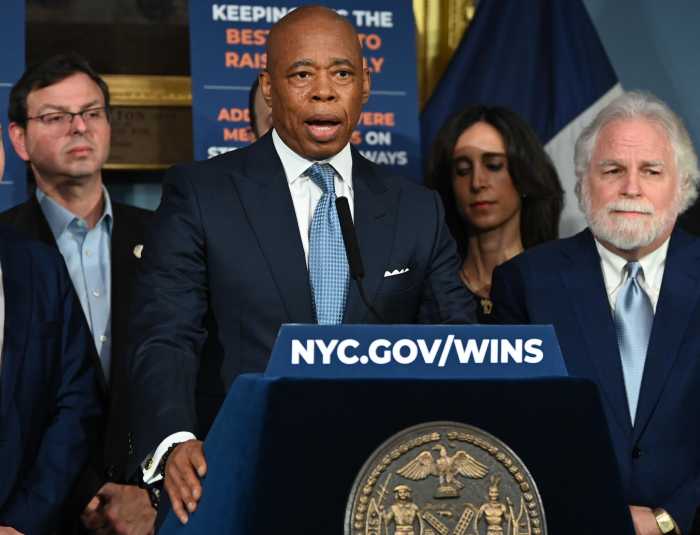2012: Do Something About It
The proposed expansion of Chelsea Market and the presence of Bowery Residents’ Committee’s 325-bed vertical campus were among our community’s most contentious and divisive matters throughout 2011. Both issues spoke to the changing face of our neighborhood — and compelled us to confront the long-term implications of embracing or resisting that change.
While we take issue with ongoing litigation following a succession of court decisions favorable to the BRC, we applaud the robust debate seen in community forums and at sidewalk protests.
In 2012, those with lingering doubts — and those who have no doubt that the facility is a worthy addition — should give serious consideration to attending the BRC’s monthly meetings (held on the first Tuesday of the month). Their door is open to anyone who wishes to tour the facility or volunteer. Walking through that door is a good way to find out if the promises made are being kept, and to make your own lasting contribution to those struggling with addiction. It’s also a powerful reminder that passionate debates and charitable deeds are equally important aspects of good citizenship.
A proposed expansion of the Chelsea Market building presents the community with a different, more ominous door to contemplate. In addition to the generally panned aesthetic changes, many rightfully fear that granting Jamestown Properties the necessary zoning variance will set a precedent for vertical expansion throughout the Chelsea Historic District. Concerned residents should take advantage of the opportunity to voice their opinions at January’s ULURP hearing and at CB4’s Preservation and Planning Committee meeting in February (followed by a full board meeting in March). The public vetting process of early 2012 will, literally, determine the shape of things to come — for years to come.
How 2011 Should Shape 2012
In Lower Manhattan, the opening of the National Memorial at the World Trade Center site signaled to the world, the nation and to New Yorkers, that hard work, performed collaboratively by dedicated groups and individuals, could result in a rebirth of a neighborhood and a renewed spirit.
During the past ten years, there were periods where a promised feeling of progress seemed neglected and the neighborhood’s rebuilding seemed in jeopardy. Much of that was due to the extraordinary complex alphabet soup of agencies that all have a hand in Downtown development. Now, with the National Memorial open and welcoming hoards of visitors each day (and with 1 World Trade Center rising 80 stories above the ground), progress is clearly visible. The next year should be spent looking who, among the agencies that played a vital role, should now start closing up shop.
Some of this work is already underway in the form of the Port Authority of New York and New Jersey preparing to absorb the Lower Manhattan Development Corporation. New Port Director Patrick Foye should make this a top priority and demand it happen in a speedy and transparent process. Foye’s predecessor, Chris Ward (in a recent interview with our sister publication Downtown Express) pointed to the Lower Manhattan Construction Command Center (LMCCC) as another agency he believed could sunset, and we agree. The LMCCC was essentially created to oversee and coordinate all of the different agencies involved in getting us to where we are today. But today, the Port Authority and existing city and state agencies can clearly coordinate and implement all construction activities. The role of the LMCCC has been dutifully carried out.
These suggestions are meant to ensure that the greatest story of 2011 — the rebirth of a neighborhood — can continue, cost-effectively and unencumbered by now unneeded layers of bureaucracy, into the future.


































